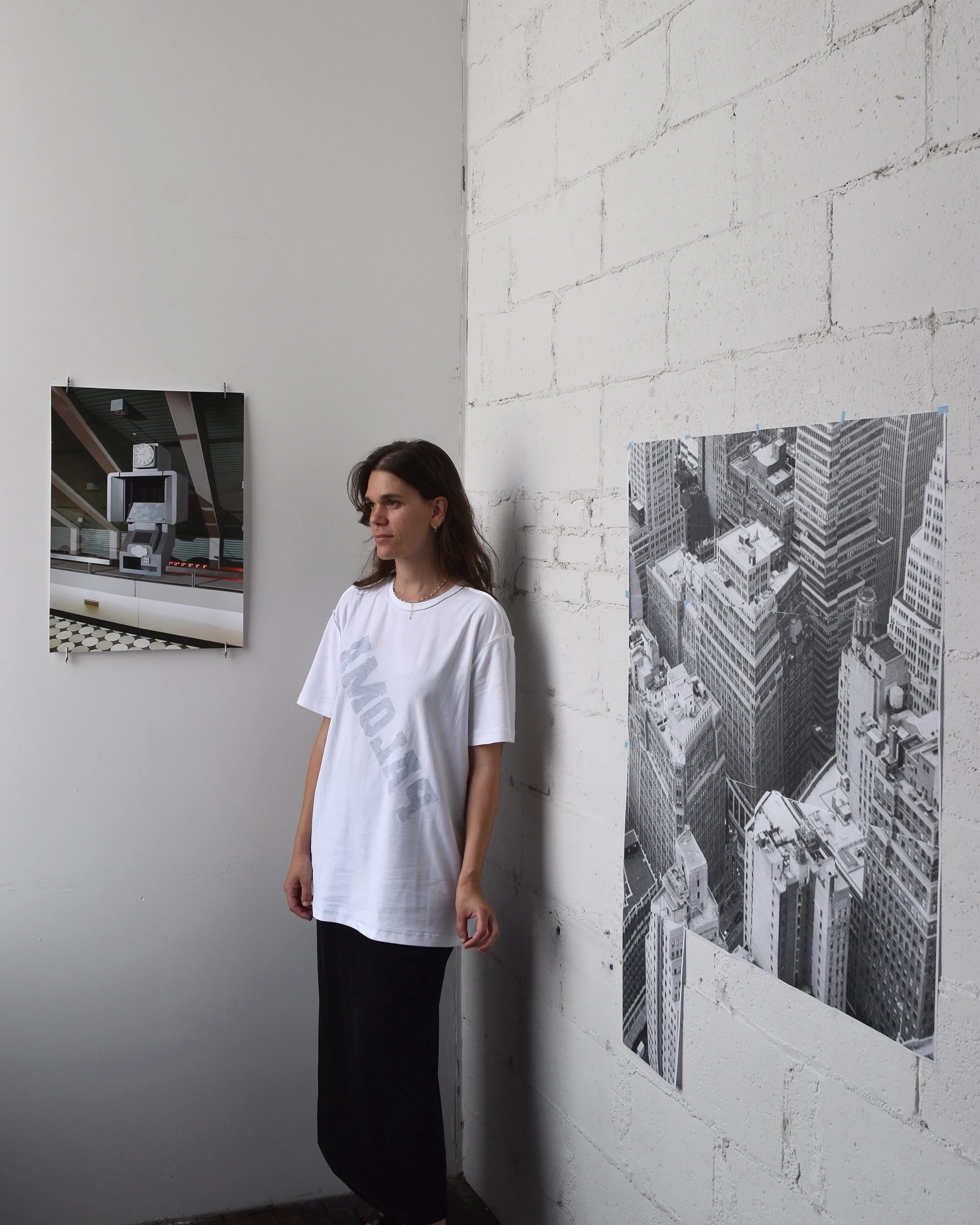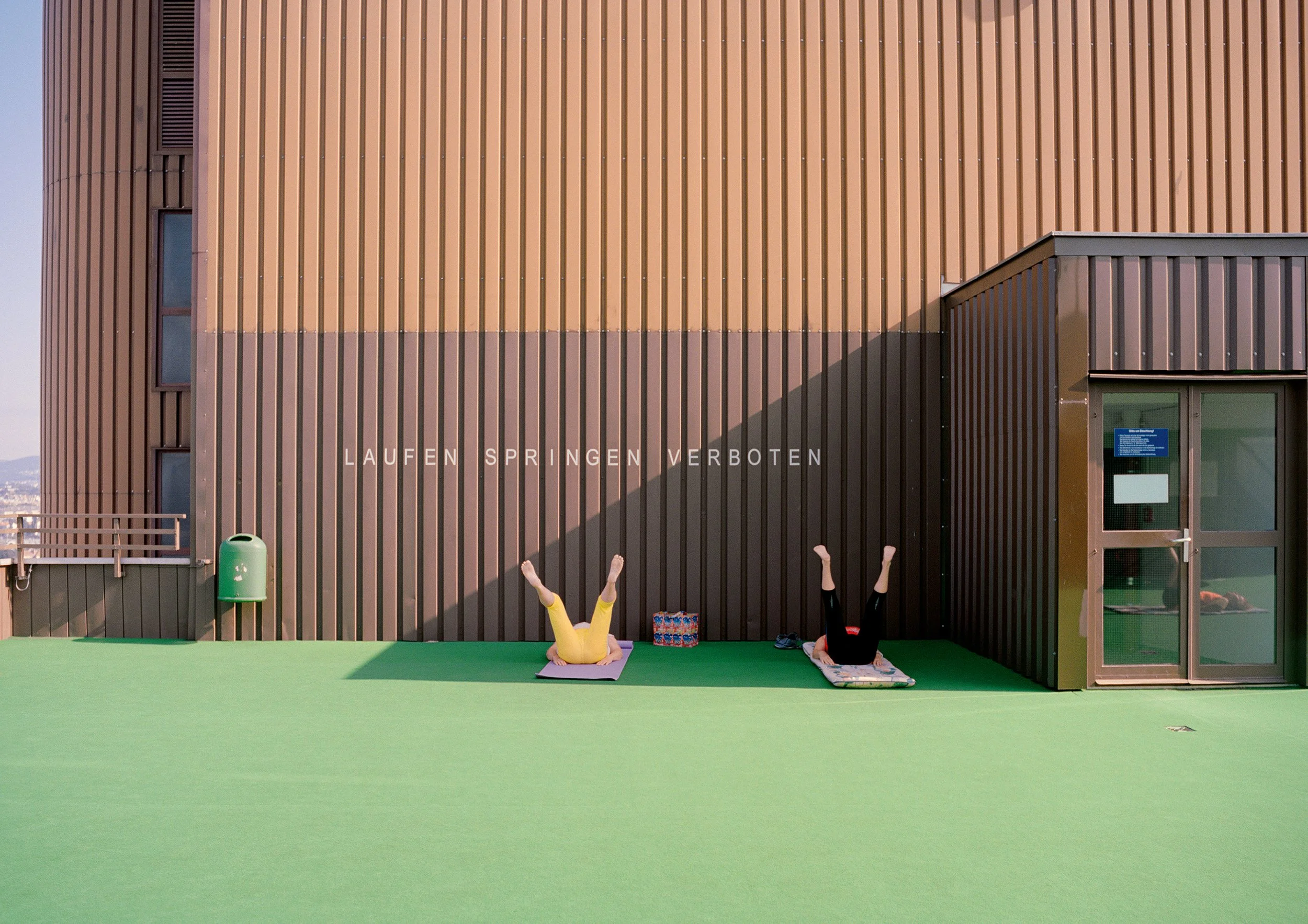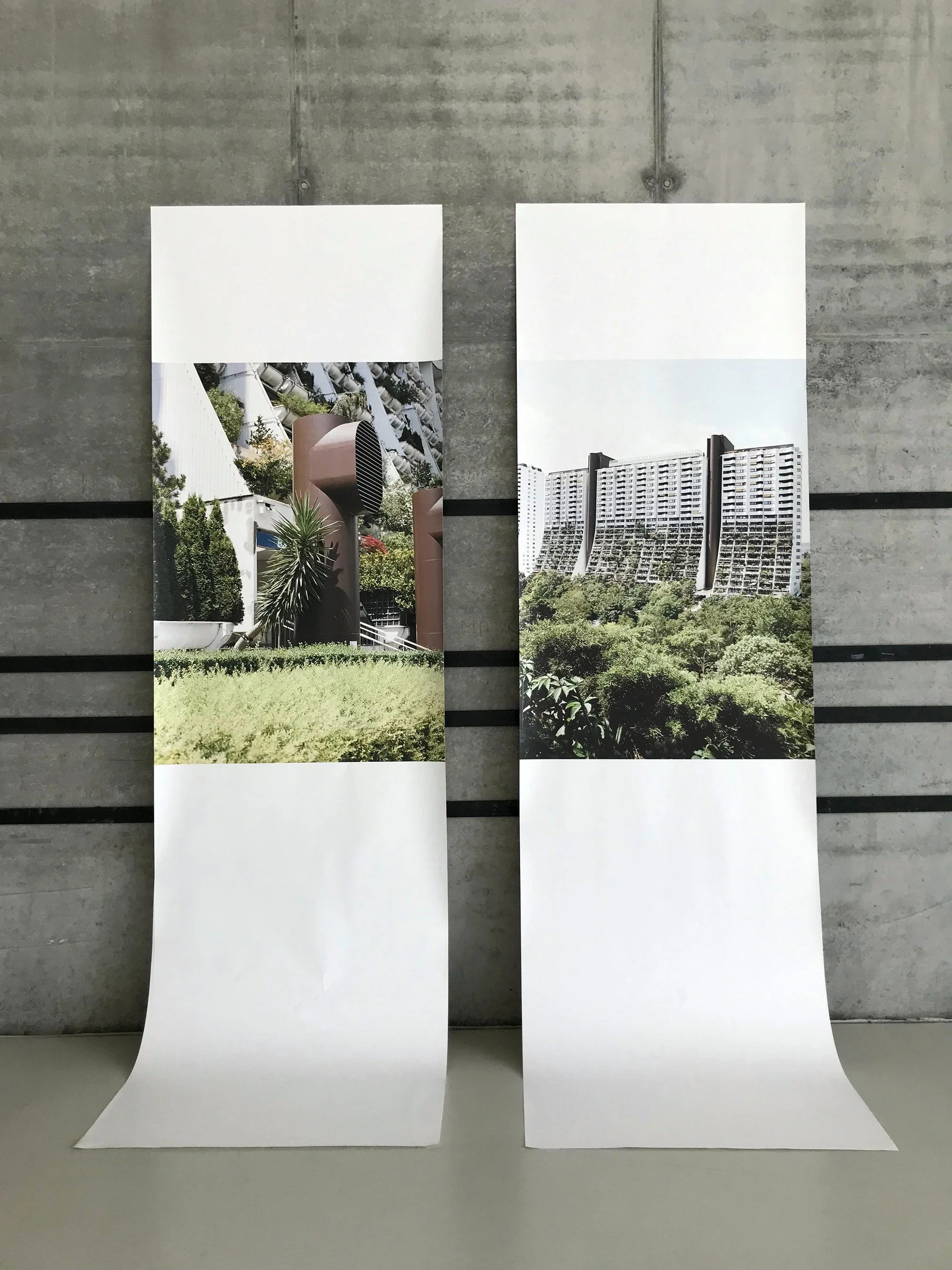Zara Pfeifer
Zara, please introduce yourself:
My name is Zara Pfeifer, and I’m an artist and photographer based in Berlin and Vienna. I studied architecture at the Academy of Fine Arts and photography at the Friedl Kubelka School for Artistic Photography in Vienna.
I do my personal long-term photo research projects that culminate in exhibitions or photo books, as well as commissioned photography for architects. I also teach a photography seminar for architecture students at TU Vienna.
Zara Pfeifer - ISCP NewYork 2023
#1 Zara, how did you first discover your passion for photography?
It was during my architecture studies when I discovered photography. I’ve taken photos with my point and shoot camera before and was looking to work on a more profound or series-based work. I was fascinated by the large-scale housing project Alterlaa. So I decided to do a photo project about it as my master thesis, which then became my first series “Du, meine konkrete Utopie”. It was a learning-by-doing process for me. I switched to medium format and working with a tripod. Finally, I’ve found my tool to communicate architecture.
#2 As both an architect and photographer, how does your dual expertise shape your storytelling approach?
My work involves spending extended time in the spaces I photograph, focusing on everyday life and the people who inhabit them. This approach allows me to understand spatial-social structures from within, when I’m accompany people over extended periods, observe changes, and challenge my own perspective as a photographer through a participatory presence. Maybe this approach also developed out of my critique during my studies, when I noticed that many architects don’t fully engage with the spaces they are designing for.
Zara Pfeifer - Wild Site Installation, 2024 Portrait
© PaulSebesta
#3 Your project "Du, meine konkrete Utopie" captures life in Vienna’s housing estate. What inspired you to document this community?
“Du, meine konkrete Utopie” is a series about the housing project Alterlaa, which was built in the 1970s for 10.000 residents in the outskirts of Vienna. I was fascinated by the scale of it and that unlike many similar modernist projects, the resident satisfaction stands at almost 100%. I discovered the inside community spaces within the housing blocks, where 33 community clubs are situated, such as the ping pong club, photo club or bridge club. The architecture of these spaces is not something you would necessarily learn how to design in architecture school. There’s no natural light, most spaces don’t have windows, there’s pretty low ceilings, and it gets really hot in the summer. But it’s still used so vividly, so it makes you question what a good community space really is.
#4 How do you balance architectural precision with human spontaneity in your work?
I’d say my architectural background definitely influences me in the way I perceive proportions, details, and of course, the topics I explore. In my Alterlaa project, I worked within a specific framework—photographing the community spaces from a central perspective, then seeing what happens later. You can’t plan these moments, especially when you are with people. In my truck series “Good Street!”, I approached it completely freely, not bringing my tripod and seeing where the process would take me.
However, across my projects, I’m deeply interested in the relationship between humans and space. So, I don’t really do portraits; instead, I take a step back and observe how people interact with and inhabit their surroundings, use the space, etc.
From the series "Du, meine konkrete Utopie" (2013-2017)
Du, meine konkrete Utopie Installation, 2019
#5 You’re currently based in NYC—how does the city impact your creative process?
I had a residency at ISCP in New York last year, where I started a project that I continued this summer when I returned. So I don’t live in New York but it has become a place I love, where I’ve made good friends.
#6 Can you share details about your current project in New York? What are you exploring here?
During my residency, I started to research about Co-op City, which is the largest cooperative housing development in the US with about 40.000 residents. During my work, I met journalist Dan Roche, who was writing about the architect of Co-op City, Herman Jessor, who has built more than 40.000 units of cooperative housing across New York. Together, we visited 10 of them, in Bronx, Queens and Brooklyn and Manhattan, meeting the residents and photographing their apartment. The series will be exhibited at Cooper Union and Citigroup New York, as well as culminate in a book.
CO-OP-CITY Bronx ,2023
#7 Three things that inspire you at the moment:
- large-scale infrastructure
- all kinds of professions
- being in move
#8 What do you currently read, watch, listen to?
My partner is preparing an upcoming concert, so all I hear recently is his music :) Other than that, the NTS infitnite mixtape ‘Slow Focus’ is what’s basically playing 24/7. I like ML Buch, HTRK, Perila, Tirzah, Claire Rousay, Malibu, Khruangbin.
ICC BERLIN, 2023 "Good Street!" Installation by Zara Pfeifer, 2016
© EvaKelety
Links
Website: https://zarapfeifer.com/
Instagram: zarapfeifer
Photo Credits: © Zara Pfeifer
Interview by Susanne Oberhollenzer









